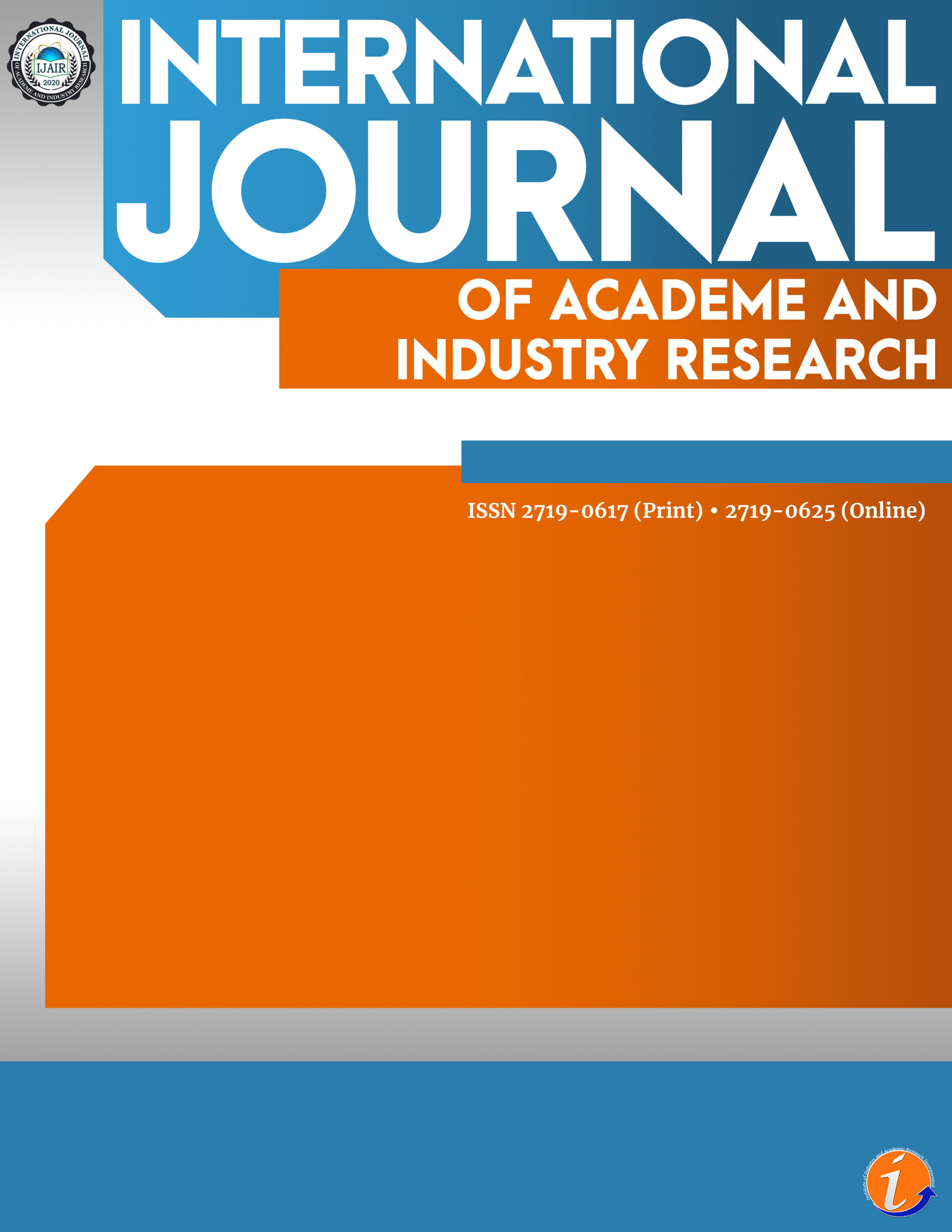There is hardly any study that has investigated healthcare promotion and social marketing in understanding hospital outpatient satisfaction in Lagos Metropolis. This study interrogate how innovative healthcare promotion and social marketing can be used to understand hospital outpatient satisfaction in Lagos metropolis. The research design supports the assumption of the cross-sectional-survey where data were collected from many samples at a single and short point in time. A total of 371 participants were recruited through stratified sampling from 18 modern care hospitals in 10 Local Government Areas considered as metropolitan areas. A researcher-designed Likert-scale questionnaire with reliable coefficient. SPSS (29 Version) software was used to analyse the data including the mean, standard deviation and multiple regression analysis. Innovative healthcare promotion including personal selling (β = 0.573, t=5.658, p<0.05) and direct marketing (β = 0.436, t=4.459, p<0.05) significantly predicted outpatient satisfaction, while advertising (β = -0.059, t=-1.171, p>0.05 at 0.242) was insignificant and weak with negative influence (β = -0.059). Social marketing including community engagement (β = 0.396, t=5.595, p<0.05) and healthcare matchmaking (β = 0.512, t=10.235, p<0.05) significantly predicted outpatient satisfaction, while social media management (β = 0.070, t=1.233, p>0.05 at 0.218) was insignificant (β = 0.070). The study concluded that social marketing in healthcare is critical for improving outpatient satisfaction. Healthcare organisations must look beyond traditional marketing strategies while employing innovative healthcare marketing strategies to reach different target audiences. Although there is an emphasis on the health benefits that trigger a quality-based product strategy to sell itself, the healthcare organisation is recommended to strengthen the quality of its innovative healthcare goods and services for outpatient improved satisfaction.
innovative healthcare, marketing promotion, social marketing, satisfaction, Lagos
Ismail Tubosun Arebi. PhD, University of Lagos, Nigeria. Email: arebiismail@gmail.com
Samson Adewumi. Corresponding author. PhD, Walter Sisulu University, Komani, South Africa. Email: sadewumi@wsu.ac.za
Ismail Tubosun Arebi - acquisition, analysis, or interpretation of data for the work; drafting the work or revising it critically for important intellectual content
Samson Adewumi - provide approval for publication of the content
Ismail Tubosun Arebi and Samson Adewumi agree to be accountable for all aspects of the work in ensuring that questions related to the accuracy or integrity of any part of the work are appropriately investigated and resolved
No potential conflict of interest was reported by the author(s).
This work was not supported by any funding.
This study was conducted in accordance with the ethical guidelines set by the Nigeria Institute of Medical Research and the Lagos and the Lagos State Ministry of Health with reference number IRB/23/065 and LS/C.350/S. I/V/878 respectively.
AI tools were not used in writing this paper.
Adenuga, K. I., Iahad, N. A., & Miskon, S. (2020). Telemedicine system: Service adoption and implementation issues in Nigeria. Indian Journal of Science and Technology, 13(12), 1321-1327. https://doi.org/10.17485/IJST/v13i12.180
Agarwal, R., Dugas, M., Gao, G., & Kannan, P. K. (2020). Emerging technologies and analytics for a new era of value-centered marketing in healthcare. Journal of the Academy of Marketing Science, 48(13), 9-23. https://doi.org/10.1007/s11747-019-00692-4
Aithal, A., & Aithal, P. S. (2020). Development and validation of survey questionnaire & experimental data–a systematical review-based statistical approach. International Journal of Management, Technology, and Social Sciences (IJMTS), 5(2), 233-251.
Arora, S., & Sagar, M. (2023). Health communication for behavior change: evolution of a marketing framework. Journal of Social Marketing, 13(1), 41-62.
Banerjee, S., & Dash, S. K. (2011). Effectiveness of e-detailing as an innovative pharmaceutical marketing tool in emerging economies: views of health care professionals of India. Journal of Medical Marketing, 11(3), 204-214. http://dx.doi.org/10.1177/1745790411413631
Brownell, K. D., Kersh, R., Ludwig, D. S., Post, R. C., Puhl, R. M., Schwartz, M. B., & Willett, W. C. (2010). Personal responsibility and obesity: a constructive approach to a controversial issue. Health Affairs, 29(3), 379-387. https://doi.org/10.1377/hlthaff.2009.0739
Carayannis, E. G., Gonzalez, E., & Wetter, J. (2003). The nature and dynamics of discontinuous and disruptive innovations from a learning and knowledge management perspective. The International Handbook on Innovation, 1(3), 23-53. http://dx.doi.org/10.1016/B978-008044198-6/50009-7
Chan, C. M., Teoh, S. Y., Yeow, A., & Pan, G. (2019). Agility in responding to disruptive digital innovation: Case study of an SME. Information Systems Journal, 29(2), 436-455.
Chowdhury, M. J. M., Ferdous, M. S., Biswas, K., Chowdhury, N., Kayes, A. S. M., Watters, P., & Ng, A. (2019). Trust modeling for blockchain-based wearable data market. In 2019 IEEE International Conference on Cloud Computing Technology and Science (CloudCom) (pp. 411-417). IEEE.
Christensen, C. M. (1997). The innovator’s dilemma: When new technologies cause great firms to fail. Boston, Massachusetts: Harvard Business School Press.
Davenport, P. J., O’Connor, S. J., Szychowski, J. M., Landry, A. Y., & Hernandez, S. R. (2017). The relationship between emergency department waits times and inpatient satisfaction. Health Marketing Quarterly, 34(2), 97-112. https://doi.org/10.1080/07359683.2017.1307066
Donovan, R., & Henley, N. (2010). Principles and practice of social marketing: An international perspective. Cambridge, Cambridge University Press.
Dubé, L., Jha, S., Faber, A., Struben, J., London, T., Mohapatra, A., & McDermott, J. (2014). Convergent innovation for sustainable economic growth and affordable universal health care: innovating the way we innovate. Annals of the New York Academy of Sciences, 1331(1), 119-141.
Eisenberg, R. S., & Price, W. N. (2017). Promoting healthcare innovation on the demand side. Journal of Law and the Biosciences, 4(1), 3-49. https://doi.org/10.1093/jlb/lsw062
Ejeikwu, T. M., & Folashade, W. (2019). Risk perception of paracetamol use among undergraduate students at University of Jos. Open Access Library Journal, 6(10), 1-10. http://dx.doi.org/10.4236/oalib.1105810
Elekwachi, P. (2019). Perceptions of financial bribery and kickbacks on Nigerian healthcare public policy. Doctoral Dissertation, Walden University.
Frederick, D. E. (2016). Managing ebook metadata in academic libraries: taming the tiger. Witney, England: Chandos Publishing.
Fry, M. L. (2014). Rethinking social marketing: Towards a sociality of consumption. Journal of Social Marketing, 4(3), 210-222. http://dx.doi.org/10.1108/JSOCM-02-2014-0011
Gans, J. (2016). The disruption dilemma. Cambridge, Massachusetts: MIT Press.
Gopinath, S., Thomas, J. S., & Krishnamurthi, L. (2014). Investigating the relationship between the content of online word of mouth, advertising, and brand performance. Marketing Science, 33(2), 241-258. https://psycnet.apa.org/doi/10.1287/mksc.2013.0820
Greenway, T., & Ross, J. S. (2017). US drug marketing: How does promotion correspond with health value? BMJ, 2(1), 357. https://doi.org/10.1136/bmj.j1855
Gupta, A., Tyagi, M., & Sharma, D. (2013). Use of social media marketing in healthcare. Journal of Health Management, 15(2), 293-302. https://doi.org/10.1177/0972063413489058
Guttentag, D. (2015). Airbnb: Disruptive innovation and the rise of an informal tourism accommodation sector. Current Issues in Tourism, 18(12), 1192-1217. http://dx.doi.org/10.1080/13683500.2013.827159
Haimowitz, I. J. (2011). Healthcare relationship marketing: Strategy, design and measurement. Aldershot: Gower Publishing Ltd.
Hofert, A. (2023). Converging technologies and business models that will transform the healthcare sector exponentially. In Digital Identity in the New Era of Personalized Medicine (pp. 46-64). IGI Global.
Iheme, O. C. (2023). Artificial intelligence-based medical device technologies implementation strategies in the Nigerian health care industry. Doctoral Dissertation, Walden University.
Ikeuchi, T., Sakurai, R., Furuta, K., Kasahara, Y., Imamura, Y., & Shinkai, S. (2018). Utilizing social robot to reduce workload of healthcare professionals in psychiatric hospital: a preliminary study. Innovation in Aging, 2(1), 695-696. https://doi.org/10.1093/geroni/igy023.2585
Johnston, M. W., & Marshall, G. W. (2013). Recruiting, selecting, and training salespeople. In Contemporary Selling (pp. 305-346). Routledge.
Kehrer, F. (2019). International direct marketing of the selected company. Master’s Thesis. University of Finance and Administration. https://147.251.49.36/th/ffpsx/?fakulta=6410;lang=en;id=12699
Kohlbacher, F., & Hang, C. C. (2011). Leveraging disruptive innovations for the silver market. The Silver Market Phenomenon: Marketing and Innovation in the Aging Society, 2(3), 65-77.
Kotler, P., Rackham, N., & Krishnaswamy, S. (2006). Ending the war between sales and marketing. Harvard Business Review, 84(7/8), 68.
Kshetri, N. (2008). the rapidly transforming Chinese high-technology industry and market: Institutions, ingredients, mechanisms and modus operandi. Amsterdam: Elsevier Publishing.
Kucuk, S. U. (2023). Visualizing marketing: From abstract to intuitive. Berlin: Springer Nature.
Kumar, V., & Gupta, S. (2016). Conceptualizing the evolution and future of advertising. Journal of Advertising, 45(3), 302-317. https://doi.org/10.1080/00913367.2016.1199335
Lagos Bureau of Statistics (2022). Vital data: Lagos state government, ministry of economic planning and budget. http://mepb.lagosstate.gov.ng/lbs-publication/
Lancaster, G., & Massingham, L. (2017). Direct marketing. In Essentials of Marketing Management (pp. 279-297). Routledge.
Lee, H., & Cho, C. H. (2020). Digital advertising: Present and future prospects. International Journal of Advertising, 39(3), 332-341. https://doi.org/10.1080/02650487.2019.1642015
Lee, N. R., & Kotler, P. (2011). Social marketing: Influencing behaviors for good. Newbury Park, California: Sage Publications.
Liang, B. C. (2013). Managing and leading for science professionals: What i wish i’d known while moving up the management ladder. Cambridge, Massachusetts: Elsevier.
Martínez-Vergara, S. J., & Valls-Pasola, J. (2021). Clarifying the disruptive innovation puzzle: A critical review. European Journal of Innovation Management, 24(3), 893-918. https://doi.org/10.1108/EJIM-07-2019-0198
Melles, M., Albayrak, A., & Goossens, R. (2021). Innovating health care: key characteristics of human-centered design. International Journal for Quality in Health Care, 33(1), 37-44. https://doi.org/10.1093/intqhc/mzaa127
National Bureau of Statistics, (2024). Social statistics in Nigeria. Abuja: The NBS Publication.
Neuhauser, L., & Kreps, G. L. (2010). eHealth communication and behavior change: Promise and performance. Social Semiotics, 20(1), 9-27. http://dx.doi.org/10.1080/10350330903438386
Nordgren, L. (2009). Value creation in health care services–developing service productivity: Experiences from Sweden. International Journal of Public Sector Management, 2(22), 114-127. http://dx.doi.org/10.1108/09513550910934529
Pandey, R., & Verma, M. R. (2008). Samples allocation in different strata for impact evaluation of developmental programme. Rev. Mat. Estat, 26(4), 103-112.
Percy, L. (2023). Strategic integrated marketing communications. Milton Park, Oxfordshire: Taylor & Francis.
Piehlmaier, D. M. (2022). Overconfidence and the adoption of robo-advice: why overconfident investors drive the expansion of automated financial advice. Financial Innovation, 8(1), 1-24. https://doi.org/10.1186/s40854-021-00324-3
Rice, L. (2019). The nature and extent of healthy architecture: The current state of progress. Archnet-IJAR: International Journal of Architectural Research, 12(3), 56-71. http://dx.doi.org/10.1108/ARCH-11-2018-0005
Saunders, M., Lewis, P., & Thornhill, A. (2009). Research methods for business students. London: Pearson education.
Sekaran, U. & Bougie, R. (2016. Research methods for business: A skill-building approach, 6th ed. Chichester: John Wiley and Sons Limited.
Silvia, S. (2019). The importance of social media and digital marketing to attract millennials’ behavior as a consumer. Marketing, 4(2), 147-162. http://dx.doi.org/10.18775/jibrm.1849-8558.2015.42.3001
Singh, A. S., & Masuku, M. B. (2014). Sampling techniques & determination of sample size in applied statistics research: an overview. International Journal of Economics, Commerce and Management, 2(11), 1-22.
Singh, A., & Vellakkal, S. (2021). Impact of public health programs on maternal and child health services and health outcomes in India: A systematic review. Social Science & Medicine, 274(1), 113-195. https://doi.org/10.1016/j.socscimed.2021.113795
Taber, K. S. (2018). The use of Cronbach Alpha when developing and reporting research instruments in science education. Research in Science Education, 48(1), 1273-1296.
Teece, D. J., Pundziene, A., Heaton, S., & Vadi, M. (2022). Managing multi-sided platforms: platform origins and go-to-market strategy. California Management Review, 64(4), 5-19. https://doi.org/10.1177/00081256221109961
Terry, N. P. (2017). Regulatory disruption and arbitrage in health-care data protection. Yale Journal of Health Policy, Law & Ethics, 17(1), 143-157.
Thomas, R. K. (2020). Marketing health services, 4th edition. Chicago, Illinois: Health Administration Press.
United Nation Development Programme (2023). What are the sustainable development goals? https://www.undp.org/sustainable-development-goals
Volberda, H. W., Khanagha, S., Baden-Fuller, C., Mihalache, O. R., & Birkinshaw, J. (2021). Strategizing in a digital world: overcoming cognitive barriers, reconfiguring routines and introducing new organizational forms. Long Range Planning, 54(5), 102-110. http://dx.doi.org/10.1016/j.lrp.2021.102110
White, L. A. (2018). Social marketing in the Caribbean: philosophy, programs, projects, and pedagogy. Social Marketing Quarterly, 24(1), 35-44. https://doi.org/10.1177/1524500417752311
World Health Organization (2017). WHO report on the global tobacco epidemic, 2017: Monitoring tobacco use and prevention policies. https://www.who.int/teams/health-promotion/tobacco-control
World Health Organization. (2020). Community engagement: a health promotion guide for universal health coverage in the hands of the people. https://www.who.int/publications/i/item/9789240010529
Yu, W., Li, M., Xue, C., Wang, J., Liu, J., Chen, H., & Zhang, L. (2016). Determinants and influencing mechanism of outpatient satisfaction: A survey on tertiary hospitals in the People’s Republic of China. Patient Preference and Adherence, 17(8), 601-612.
Cite this article:
Arebi, I.T. & Adewumi, S. (2025). Innovative healthcare marketing promotion, social marketing and outpatients’ satisfaction in selected private hospitals in Lagos Metropolis. International Journal of Academe and Industry Research, 6(2), 191-219. https://doi.org/10.53378/ijair.353217
License:
![]()
This work is licensed under a Creative Commons Attribution (CC BY 4.0) International License.










